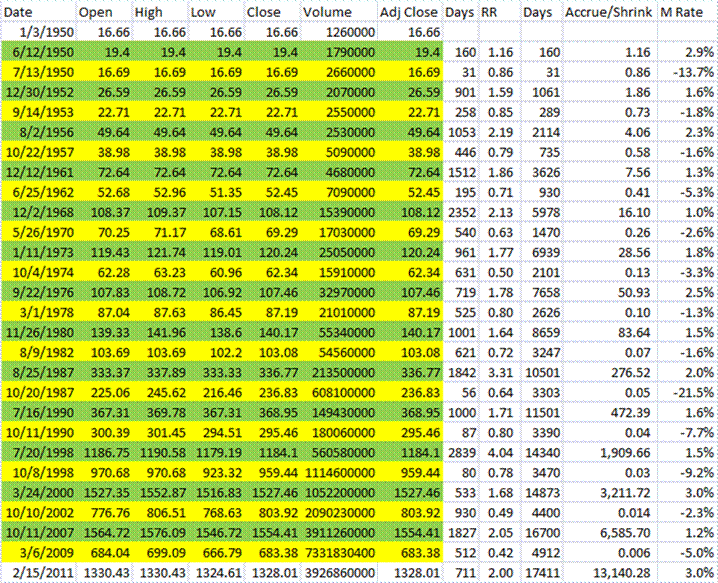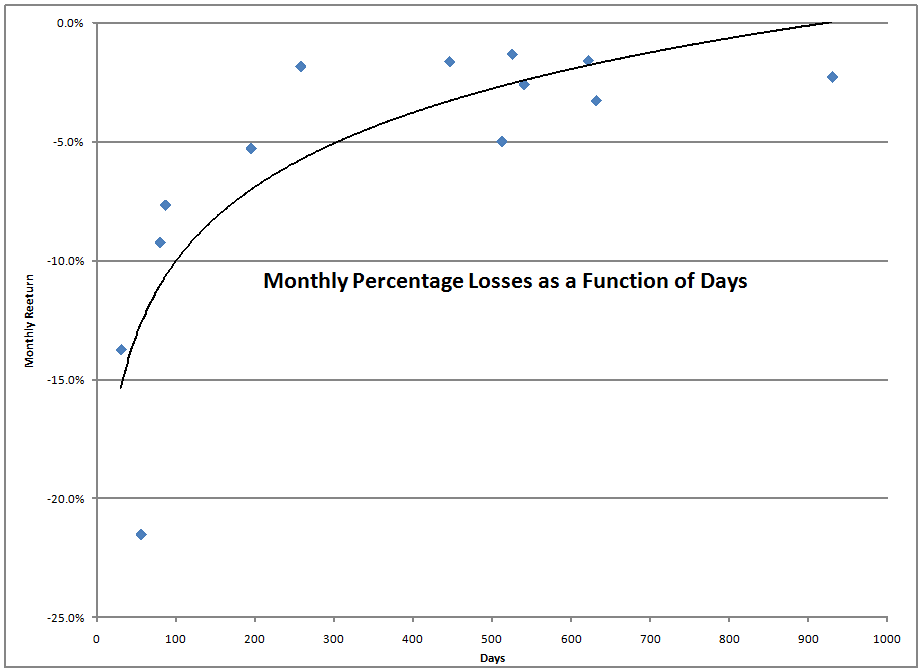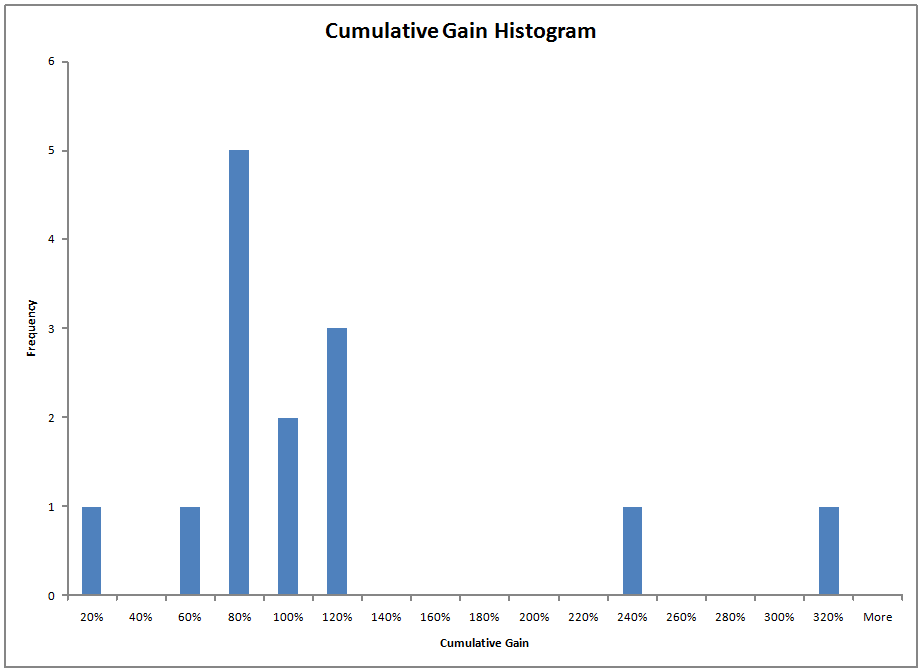Critical Analysis of Buffett’s Annual Letter
I’ve written a lot about Buffett over the years.? I think this is the eighth shareholder letter that I have written about.? I have the unique perspective of being both an actuary and a value investor.? I get what Buffett is doing, though by no means am I his equal.? This is a commentary on his 2010 shareholder letter.
Buffett begins with the transformational merger of Burlington Northern.? I spoke well of this merger that many dissed in my piece, The Forever Fund.? Face it — where could you find such a big business that is inflation-protected, and with such a large moat?? No one could replicate BN at the price that Berky paid.? This acquisition reshaped Berky, making it far more of an industrial firm, albeit one financed with insurance float.
Measuring Performance
From page 2:
In Berkshire?s case, we long ago told you that our job is to increase per-share intrinsic value at a rate greater than the increase (including dividends) of the S&P 500. In some years we succeed; in others we fail. But, if we are unable over time to reach that goal, we have done nothing for our investors, who by themselves could have realized an equal or better result by owning an index fund.
The challenge, of course, is the calculation of intrinsic value. Present that task to Charlie and me separately, and you will get two different answers. Precision just isn?t possible.
To eliminate subjectivity, we therefore use an understated proxy for intrinsic-value ? book value ? when measuring our performance. To be sure, some of our businesses are worth far more than their carrying value on our books. (Later in this report, we?ll present a case study.) But since that premium seldom swings wildly from year to year, book value can serve as a reasonable device for tracking how we are doing.
This is a wise way to measure performance, and many value-oriented insurance companies do this.? But Berky isn’t just an insurance company, and book value isn’t a perfect metric.? But change in book value plus dividends is a much better metric than earnings, so using that is a reasonable metric to evaluate Berky.? On that score Berky has done very well over the years, and I would argue that Buffett has done even better in his later years because it is increasingly difficult to deploy a large amount of money and still beat the averages.? Look at what I call “dollar alpha.”? The amount of outperformance is limited, but Buffett is absorbing a large portion of the alpha in the market.? (Of course aggregate alpha is zero, but if a large player continues to do well, that has a disproportionate effect on the rest of the market.)
Capital Management
Our flexibility in respect to capital allocation has accounted for much of our progress to date. We have been able to take money we earn from, say, See?s Candies or Business Wire (two of our best-run businesses, but also two offering limited reinvestment opportunities) and use it as part of the stake we needed to buy BNSF.
Buffett understands the difference between businesses that have reinvestment opportunities, and those that don’t.
Culture
Our final advantage is the hard-to-duplicate culture that permeates Berkshire. And in businesses, culture counts.
To start with, the directors who represent you think and act like owners. They receive token compensation: no options, no restricted stock and, for that matter, virtually no cash. We do not provide them directors and officers liability insurance, a given at almost every other large public company. If they mess up with your money, they will lose their money as well. Leaving my holdings aside, directors and their families own Berkshire shares worth more than $3 billion. Our directors, therefore, monitor Berkshire?s actions and results with keen interest and an owner?s eye. You and I are lucky to have them as stewards.
This same owner-orientation prevails among our managers. In many cases, these are people who have sought out Berkshire as an acquirer for a business that they and their families have long owned. They came to us with an owner?s mindset, and we provide an environment that encourages them to retain it. Having managers who love their businesses is no small advantage.
Cultures self-propagate. Winston Churchill once said, ?You shape your houses and then they shape you.? That wisdom applies to businesses as well. Bureaucratic procedures beget more bureaucracy, and imperial corporate palaces induce imperious behavior. (As one wag put it, ?You know you?re no longer CEO when you get in the back seat of your car and it doesn?t move.?) At Berkshire?s ?World Headquarters? our annual rent is $270,212. Moreover, the home-office investment in furniture, art, Coke dispenser, lunch room, high-tech equipment ? you name it ? totals $301,363. As long as Charlie and I treat your money as if it were our own, Berkshire?s managers are likely to be careful with it as well.
Berky is one of the few companies where they have the interests of the outside passive minority shareholder at heart.? The company runs thin; excess expenses are small to nonexistent.
Insurance
He gives his usual praise of Ajit Jain who I have met.? A genuinely bright guy, and friendly as well.
With Gen Re, he emphasizes pricing discipline — the willingness to walk away, and not write business.? This is the core of good insurance management.? Never intentionally write business for an underwriting loss.
Manufacturing, Service and Retailing Operations
He talks abut the improvement at NetJets, which had been quite a dog for Berky.? David Sokol had quite an impact there.? But beyond that, Berky has a wide number of businesses that do very well.
He also discusses the black box that is Marmon, that Berky owns a majority of, and will own the whole thing by 2014 at latest.? It is also doing well.
Regulated, Capital-Intensive Businesses
BNSF and MidAmerican Energy fill out this segment.? Buffett is more than logical to put them together, because their enterprises are subject to their regulators, but enough distant from insurers that they get a different classification.? Why?
Like insurance, you don’t have perfect freedom to redirect earnings as you wish.? Some earnings must be reinvested into maintenance, and with discretion, into growth.
What Matters Least at Berky
The public investments, large as they are, are a small part of what makes Berky run.? People pore over the investments that Berky makes, but the guts of Berky are not investing, but managing a conglomerate of businesses funded by cash flow from insurance.
Todd Combs
While at a prior employer, I came to know Todd Combs, and we traded a bunch of ideas in the insurance space.? He was a bright guy.? I have little doubt that he will do well for Berky.? I remain available for any additional mandate that Berky might? require.? (I giggle as I write this, because though I have done well, why should Warren want a shmoe like me?)? That said, I am willing to manage any assets of Berky at my bottom rate of 0.1%/year.
Derivatives
Buffett describes how he has use derivatives to his advantage.? Amid the criticisms, he has made money there as the stock markets of the world have recovered.
Life and Debt
Buffett explains how avoidance of debt is wise. And after that:
We agree with investment writer Ray DeVoe?s observation, ?More money has been lost reaching for yield than at the point of a gun.?
True, utterly true.? And much as I like Buffett and Ray DeVoe, I would like my readers to internalize that there is no such thing as yield.? Yield is the decision of the company, but what you should? ask is what is the increase in value of the company.? Look for investments that increase your net worth the most.







